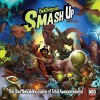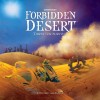drag badge here
drag badge here
Atticus653
gamer level 3
1047 xp
1047 xp
followers
5
5
Use my invite URL to register (this will give me kudos)
https://boardgaming.com/register/?invited_by=atticus653
profile badges




recent achievements

Rated 25 Games
Rate 25 games you have played.
Rate 25 games you have played.

I'm a Real Player!
Claim that you have played a game today by clicking the "Played Today!" button on a game page 25 times.
Claim that you have played a game today by clicking the "Played Today!" button on a game page 25 times.

Amateur Reviewer
Review 3 games and receive a total of 40 positive review ratings.
Review 3 games and receive a total of 40 positive review ratings.

Gamer - Level 3
Earn Gamer XP to level up!
Earn Gamer XP to level up!
Player Stats
Critic (lvl 1)
250 xp
250 xp
Explorer (lvl 1)
157 xp
157 xp
Professor (lvl 1)
100 xp
100 xp
Reporter (lvl 0)
31 xp
31 xp
About Me
I grew up playing the old standby family games (Clue, Pictionary, Life, etc.) In college I discovered there was a whole deeper dimension to explore, and had a great time trying out various war games, civ-building games, etc.
Then adulthood and "real life" interrupted my interest in tabletop gaming for a solid 10 years, but I'm getting back into it. My current favorites are Smash Up, King of Tokyo, and Mice & Mystics, but I have a long list of games I'm hoping to play/purchase.








































Dead of Winter: A Crossroads Game
In terms of theme and immersive gameplay, Dead of Winter is second to none.
This can be attributed to the components of the game, including the grimy, snow-covered artwork and the high-quality components.
It can also be attributed to the Crossroads system, which adds a wonderful story-driven element to every turn. At the beginning of a player’s turn, the player next to them will draw a Crossroads card and, depending on the circumstances, will read a snippet of story that enhances the dire conditions they are faced with. These cards also offer a choice to the player, and whatever decision they make will often have an impact on the rest of the game.
In our last game, a Crossroads card was drawn for me that *SPOILER* gave me the option of saving a horse from certain death. If I chose to save the horse, we would have to feed it, sacrificing precious food. In return, the horse would give me the ability to more easily travel between locations. I could also choose to let the horse die, in which case I would harvest its body for meat, supplying our colony with extra food for that round.
These decisions, and the flavor they lend the gameplay, are part of what makes Dead of Winter such a fun and immersive game. The other major element, of course, is the possibility of a traitor lurking within the group of survivors. This has been one of the biggest selling points of the game, and it adds so much delicious tension to the experience. On top of that, each survivor has a secret objective that he or she must complete. These secret objectives can be as innocent as needing to have a certain number of cards in your hand by the end of the game, or they can involve much darker motivations.
Every game of Dead of Winter has been a different experience for our group, thanks to the Crossroads cards and the random secret objectives. Plus, there are so many fun survivors to take control of that each game feels fresh and compelling.
The one aspect that keeps Dead of Winter from being a ’10’ for me, and the one that others have been critical of as well, is the fact that a traitor can sometimes too easily affect the endgame. Some might argue that this is thematically ok, but it throws off the balance of the game a bit. Basically, a traitor can do nothing to give himself away until the very last turn, allowing himself to sabotage the game without the other players having enough time to recover. The saving grace is the simple fact that this game is so fun to play even when you lose.